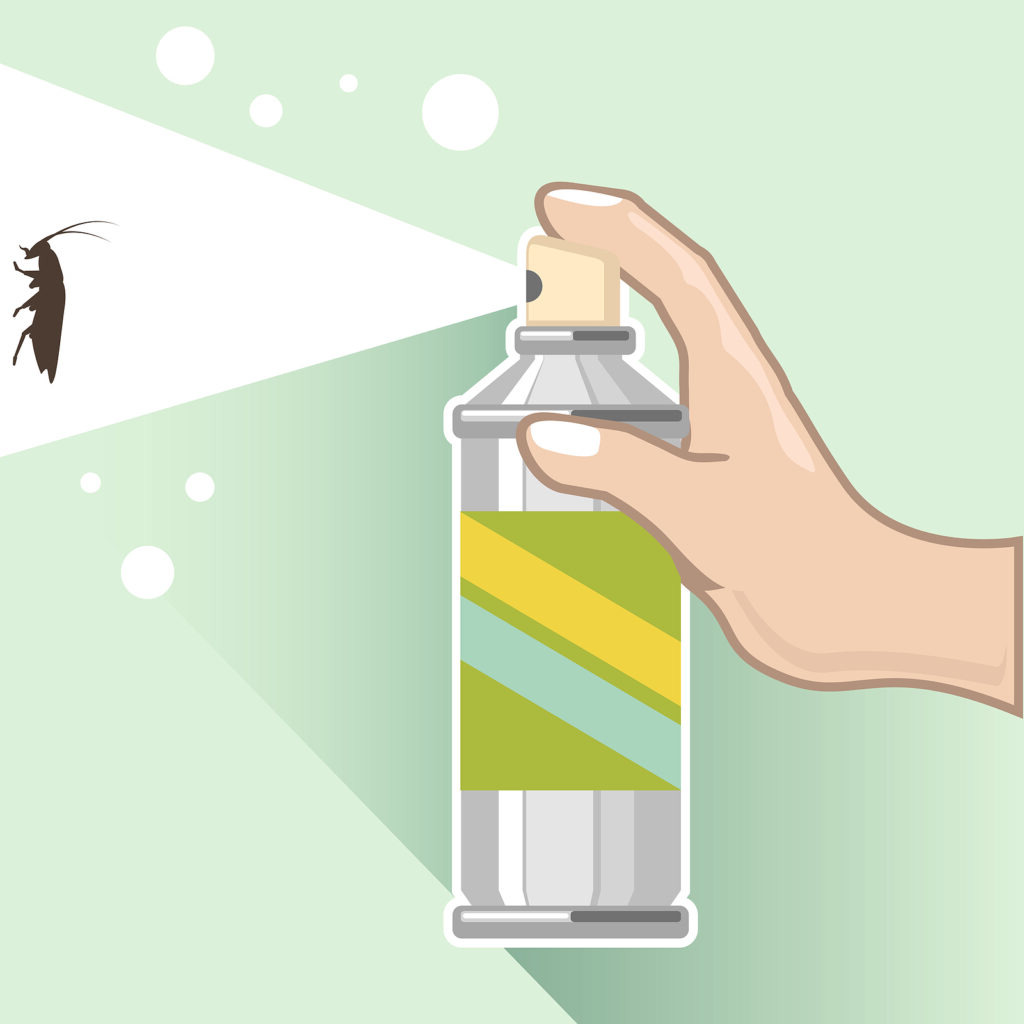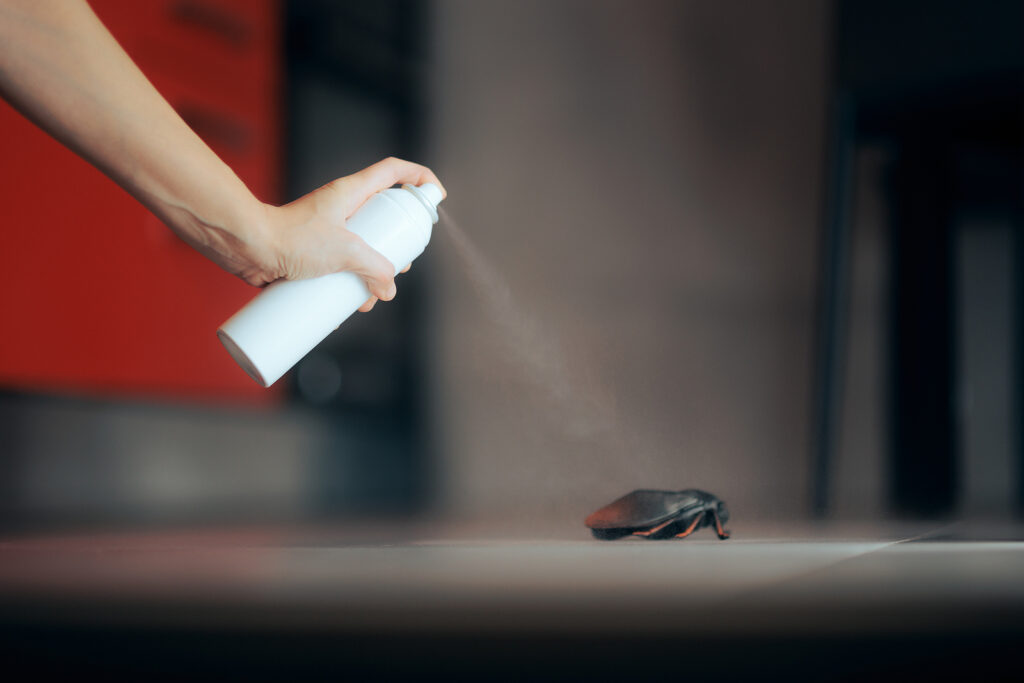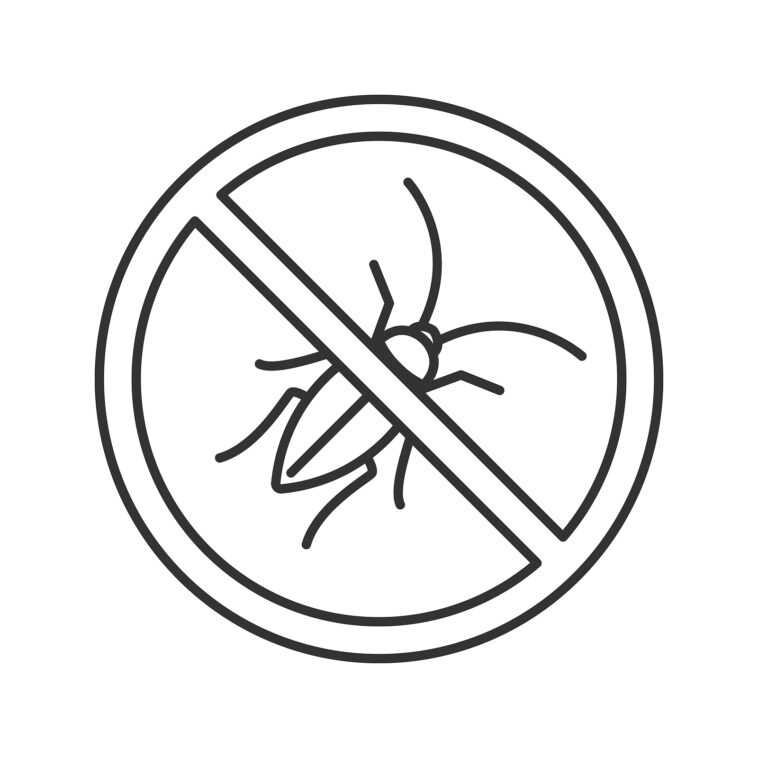DIY Roach Killer
When it comes to dealing with household pests, I can't help but shudder at the thought of cockroaches. These stubborn little creatures are not just annoying; they can really make your home feel invaded and even pose health risks. While you can always call in the professionals for pest control, I've always been a fan of taking a more hands-on and budget-friendly approach to getting rid of roaches.
So, in this comprehensive guide, I want to share with you some of the best DIY roach killer solutions that I've come across. Let's dive into each method in detail, so you can have the knowledge you need to effectively tackle your roach problem.
Understanding the Roach Problem
To successfully tackle the issue of roach infestations through DIY methods, it is imperative to have a thorough grasp of the characteristics and behavior of these pests. Cockroaches, often referred to as roaches, are nocturnal insects that predominantly stay hidden during daylight hours and venture out at night to search for food and water sources. In addition to their unsightly appearance, roaches pose a significant health hazard due to their role as carriers of harmful pathogens.
Roaches are notorious for their remarkable adaptability and resilience in various environments. Their rapid reproduction rate means that they can multiply rapidly, quickly overrunning your living spaces.
To effectively combat a roach infestation, it is essential to become well-acquainted with their habits, preferred nesting locations, and the telltale signs of their presence within your home. Armed with this knowledge, you will be better equipped to devise the most effective strategy to eliminate these unwelcome intruders and safeguard the health of your household.
Explore our latest post on Pest Control DIY vs. Professional
The Importance of DIY Roach Killer
Professional pest control services undoubtedly offer an effective means of addressing roach infestations. However, they often come with a hefty price tag and may involve the application of chemical pesticides that you might be reluctant to introduce into your living spaces. Fortunately, the alternative of DIY roach killers provides a compelling solution that not only saves you money but also promotes safety and environmental consciousness.
When you opt for DIY roach killers, you assume greater control over the pest problem and can manage it according to your convenience and preferences. These homemade solutions are versatile and can be tailored to suit your specific needs, making them a highly practical choice for homeowners looking to tackle roach infestations effectively. Additionally, DIY roach killers empower you to address the issue while minimizing the use of potentially harmful chemicals, which is a win-win for both your wallet and the environment.

Common Ingredients in DIY Roach Killers
Before we dive into our reviews of the top DIY roach killers, it's essential to familiarize ourselves with the common ingredients frequently used in these homemade solutions. Understanding the components that make up these DIY remedies can help you make an informed choice for your specific roach infestation:
- Boric Acid: This versatile ingredient serves as a potent insecticide when ingested by roaches. It disrupts their digestive system, leading to their demise. Boric acid is a go-to choice for many DIY roach killer recipes due to its effectiveness.
- Diatomaceous Earth (DE): A natural powder derived from fossilized algae, DE is renowned for its ability to dehydrate and eventually kill roaches. When roaches come into contact with DE, it damages their exoskeleton and desiccates their bodies, making it a popular choice for environmentally-conscious homeowners.
- Baking Soda and Sugar: Combining baking soda and sugar creates an enticing bait mixture for roaches. Roaches are attracted to the sugar but are unable to digest the baking soda, which disrupts their digestive systems and ultimately leads to their demise.
- Essential Oils: Natural essential oils such as peppermint, lavender, and eucalyptus possess roach-deterring properties. These oils emit strong scents that repel roaches, making them a safe and environmentally-friendly option for keeping these pests at bay.
- Soap and Water: This simple yet effective solution involves creating a trap using soapy water. Roaches are attracted to the water source but become trapped in the soapy solution, making it an easy and non-toxic way to eliminate them.
Now, let's take a deep dive into each of these DIY roach killer methods and thoroughly assess their effectiveness, safety, and application techniques.
Explore our latest post on Bug-Free Home
Top DIY Roach Killer Solutions: A Detailed Review
Boric Acid: The Versatile Insecticide
Boric acid is undoubtedly one of the most effective and widely used DIY roach killers. Its mode of action involves disrupting the roach's digestive system when ingested, ultimately leading to their demise. Here's a more comprehensive look at how to use it effectively:
How to Use
- Mix boric acid with a small amount of sugar to attract roaches.
- Place the bait mixture in areas frequented by roaches, such as behind appliances, under sinks, and along baseboards.
- Ensure pets and children cannot access the bait, as boric acid can be harmful if ingested in large quantities.
Effectiveness
Boric acid is renowned for its long-lasting effect, making it an excellent choice for long-term roach control. The beauty of this method lies in its ability to affect roaches over time. When roaches come into contact with the boric acid-laced bait, they carry it back to their nests, inadvertently contaminating other roaches in the colony.
Safety
While boric acid is generally considered safe when used correctly, it is essential to exercise caution when handling it, especially around children and pets. Wearing gloves and following precise instructions for application can help minimize any potential risks.
Diatomaceous Earth (DE): The Natural Desiccant
Diatomaceous Earth is a natural, abrasive powder that can effectively kill roaches by dehydrating them. It's safe for humans and pets when used as directed. Here's a more detailed overview of how to use it:
How to Use
- Sprinkle a thin layer of DE in areas where you've seen roaches or evidence of their activity.
- Roaches will walk through the powder, which will adhere to their exoskeletons and begin absorbing moisture, leading to their eventual death.
Effectiveness
DE is a safe and non-toxic option that works well for both short-term and long-term roach control. Its abrasive properties ensure it remains effective as long as it remains dry. This natural solution is also environmentally friendly, making it an attractive option for eco-conscious individuals.
Safety
While DE is generally safe for humans and pets when used correctly, it is advisable to avoid inhaling the dust, as it can irritate your respiratory system. It's best to apply it in areas with minimal air circulation to prevent the powder from dispersing into the air.
Baking Soda and Sugar: The Disruptive Bait Mixture
When it comes to DIY roach control, the combination of baking soda and sugar has gained popularity for its ability to disrupt a roach's digestive system upon ingestion. Below, we delve into the details of how to use this method effectively:
How to Use Baking Soda and Sugar as a Roach Bait
- Prepare the Mixture: Start by mixing equal parts of baking soda and granulated sugar in a bowl. The sugar acts as an attractant, while the baking soda disrupts the roach's digestive process.
- Strategic Placement: Identify key areas where roaches are active within your home. Common hotspots include kitchen cabinets, beneath appliances, near garbage bins, and along known roach pathways.
- Apply the Mixture: Sprinkle small amounts of the baking soda and sugar mixture in these targeted areas. Roaches are drawn to the sweetness of the sugar and will consume the mixture unknowingly.
Effectiveness of Baking Soda and Sugar Bait
Baking soda and sugar bait can deliver swift results by reducing roach populations quickly, making it an excellent choice for immediate relief from infestations. However, it's important to acknowledge that this method may not provide a long-term solution, as roaches can adapt and avoid consuming the mixture over time.
Safety Considerations
This mixture is generally safe for humans and pets but should still be kept out of reach of children to prevent ingestion. It's a non-toxic alternative, which makes it appealing for households with safety concerns.
Essential Oils: The Natural Repellents
For those looking for a natural and eco-friendly approach to deter roaches, essential oils like peppermint, lavender, and eucalyptus can be valuable allies. Here's an in-depth look at how to use these essential oils effectively:
How to Use Essential Oils as Roach Repellents
- Prepare a Diluted Solution: In a spray bottle, mix a few drops of your chosen essential oil with water. This creates a diluted solution that is safe for application.
- Target Problem Areas: Identify areas in your home that are susceptible to roach infestations, such as entry points, cracks, crevices, and other hiding spots.
- Spray the Solution: Thoroughly spray the diluted essential oil solution in these vulnerable areas. The aroma of the oil will act as a natural deterrent, discouraging roaches from entering your living spaces.
Effectiveness of Essential Oils
Essential oils are known for their potent repellent properties, which can discourage roaches from invading your home. However, it's important to note that while essential oils can be effective in repelling roaches, they may not provide complete eradication on their own. For the best results, consider combining the use of essential oils with other roach control methods, such as traps or baits, to create a comprehensive approach to pest management.
Safety Considerations
Essential oils are generally safe for humans and pets when diluted. However, it's crucial to exercise caution around cats, as some oils can be toxic to them. If you have pets, choose oils that are safe for them or use alternative methods to keep your pets safe from exposure.
Soap and Water: The Simple Trap
For those seeking a straightforward and non-toxic solution to combat roach infestations, soapy water can prove to be a surprisingly effective trap. Here's a more detailed guide on how to use this method:
How to Use Soapy Water as a Roach Trap
- Select a Suitable Container: Begin by choosing a shallow container or dish. Ensure that it is deep enough to trap roaches but not too deep, as it should be easy for them to climb in and out.
- Prepare the Soapy Water Solution: Fill the chosen container with a mixture of water and dish soap. The soap reduces the surface tension of the water, making it difficult for roaches to float and escape.
- Strategic Placement: Identify areas where roaches are most active in your home. Common spots include kitchen counters, bathroom sinks, and locations near pet food bowls.
- Set the Trap: Place the container with the soapy water in these high-activity areas. Roaches are attracted to the scent of the soap and water, which entices them to climb in.
Effectiveness of Soapy Water Traps
Soapy water traps can be remarkably effective in reducing roach populations quickly, providing immediate relief from infestations. However, it's essential to note that this method primarily captures individual roaches rather than addressing the entire colony. Therefore, while it offers a short-term solution, it may not eliminate the root cause of the infestation.
Safety and Non-Toxicity
One of the significant advantages of using soapy water traps is their safety for humans and pets. When used correctly, this method poses no significant risks or hazards. It's a humane way to capture and remove roaches from your living spaces without causing harm to the pests or your loved ones. Additionally, it does not involve toxic chemicals, making it an environmentally friendly choice for roach control.

Precautions and Handling Tips for DIY Roach Killers
When dealing with DIY roach killers to combat infestations in your home, it is of utmost importance to prioritize the safety of yourself, your family, and your pets. To ensure the secure and effective use of these homemade solutions, we've compiled a list of detailed safety precautions and handling tips:
Secure Storage and Accessibility
It is crucial to store all DIY roach killer solutions in a secure location that is completely inaccessible to children and pets. Consider placing them in high cabinets or locked storage areas to prevent any accidental exposure or ingestion.
Protective Gloves
When working with ingredients such as boric acid or diatomaceous earth, it is advisable to wear protective gloves to minimize skin contact. While these substances are generally safe, direct contact can lead to skin irritation.
Respiratory Protection
Especially when applying diatomaceous earth in powdered form, it is prudent to wear a mask or respirator to prevent inhaling the fine dust particles. This precaution is essential for safeguarding your respiratory system from potential irritation or harm.
Thorough Handwashing
After handling any roach killer ingredients, practice thorough hand hygiene. Wash your hands diligently with soap and water to ensure the complete removal of any residue and to minimize the risk of unintentional contact with your face or mouth.
Bait Mixture Placement
Ensure that bait mixtures containing roach killers are strategically placed in areas frequently visited by roaches while also being entirely inaccessible to children and pets. This proactive measure reduces the possibility of accidental ingestion, which can lead to health concerns.
Explore our latest post on DIY Pest Control
Natural Roach Repellents: Prevention is Key
Preventing roaches from entering your home is the first line of defense against infestations. In this section, we'll explore natural roach repellents and strategies that can help maintain a roach-free environment.
Sealing Entry Points
Roaches can enter your home through tiny cracks and crevices in walls, doors, and windows. To prevent their entry, inspect your home thoroughly and seal any potential entry points with caulk or weather stripping. Pay special attention to areas around pipes and utility openings.
Proper Food Storage
Roaches are attracted to food sources, so proper food storage is essential. Store food in airtight containers to deny roaches access to their primary source of sustenance. Keep your kitchen clean, and regularly clean up crumbs and spills.
Remove Clutter
Roaches love hiding in cluttered spaces, so declutter your home. Dispose of old newspapers, cardboard boxes, and other items that can serve as hiding spots. This not only makes it less attractive for roaches but also makes it easier to spot any potential infestations.
Regular Cleaning
Maintaining cleanliness is crucial in roach prevention. Vacuum regularly, paying attention to cracks and crevices where roaches may hide. Clean kitchen appliances, countertops, and floors daily, and empty the trash regularly.
Natural Repellents
Several natural substances are known to repel roaches. Peppermint oil, catnip, and bay leaves are just a few examples. You can create a natural repellent spray by mixing water with a few drops of essential oil and use it to deter roaches from specific areas.
Diatomaceous Earth (DE)
In addition to using DE as a roach killer, you can also use it as a preventive measure. Sprinkle a thin layer of DE in potential entry points, such as around windows and doors. This acts as a physical barrier that can deter roaches from crossing.
By implementing these natural roach repellents and preventive measures, you can significantly reduce the likelihood of a roach infestation in your home.

Understanding Roach Species: Tailoring Your Approach
Different roach species have varying habits and preferences, and understanding the specific type of roach infesting your home can help you tailor your DIY roach killer methods more effectively.
German Roaches
German roaches are one of the most common indoor roach species. They are small and light brown, typically found in kitchens and bathrooms. German roaches reproduce rapidly, making them a challenging pest to control. DIY baits and traps, along with meticulous cleaning, are often required to combat them effectively.
American Roaches
American roaches, also known as Palmetto bugs, are larger and reddish-brown in color. They prefer moist environments and are often found in basements and crawl spaces. While baits and traps can work, addressing moisture issues and sealing entry points is essential to prevent American roach infestations.
Oriental Roaches
Oriental roaches are dark brown or black and are commonly found in damp, cool areas like basements and crawl spaces. They are less common than German roaches but can still infest homes. Effective control measures include reducing moisture levels, sealing entry points, and using roach baits.
Brown-Banded Roaches
Brown-banded roaches are small and light brown, with distinctive brown bands across their wings. They prefer warm, dry areas and are often found in bedrooms and living rooms. Roach baits and traps can be effective against them, along with thorough cleaning.
Conclusion
In conclusion, tackling a roach infestation requires a well-informed and systematic approach. Understanding the nature of the problem, choosing the most appropriate DIY roach killer method, and prioritizing safety are all essential components of effective pest control.
By following the recommendations in this comprehensive guide, you can take proactive steps to eliminate roaches from your home, creating a more comfortable and sanitary living environment for you and your family. Remember that DIY roach killers, while effective, may not always provide a complete solution, and in cases of persistent or worsening infestations, seeking professional pest control services may be necessary.
Sources
https://www.apartmenttherapy.com/3-non-toxic-tips-for-ridding-your-home-of-roaches-235328
https://www.ncbi.nlm.nih.gov/pmc/articles/PMC8231608/
https://www.maine.gov/dacf/php/gotpests/bugs/factsheets/cockroaches-fla.pdf



